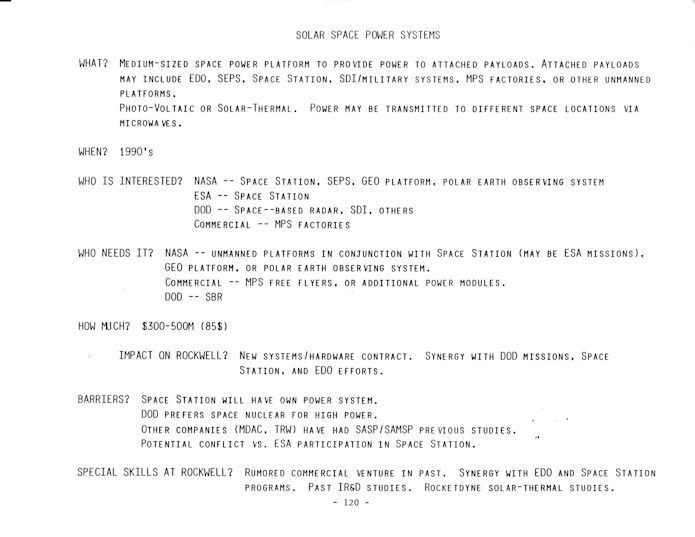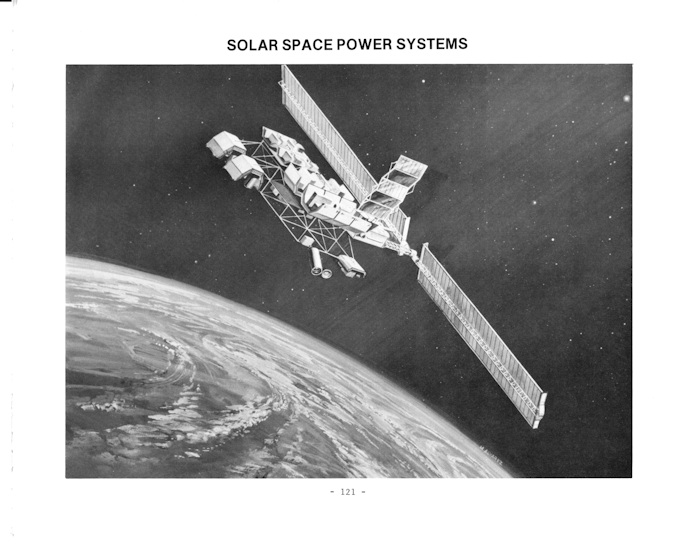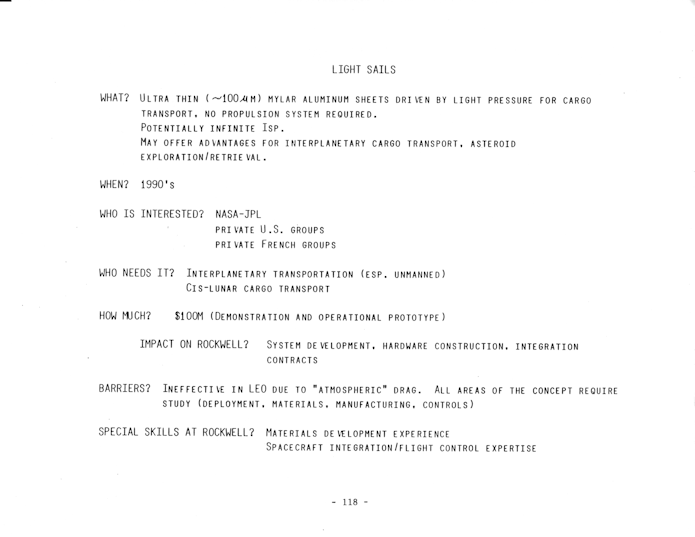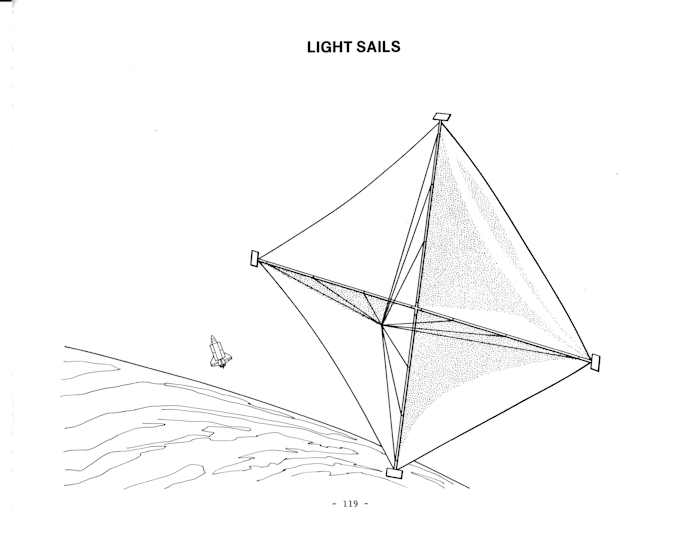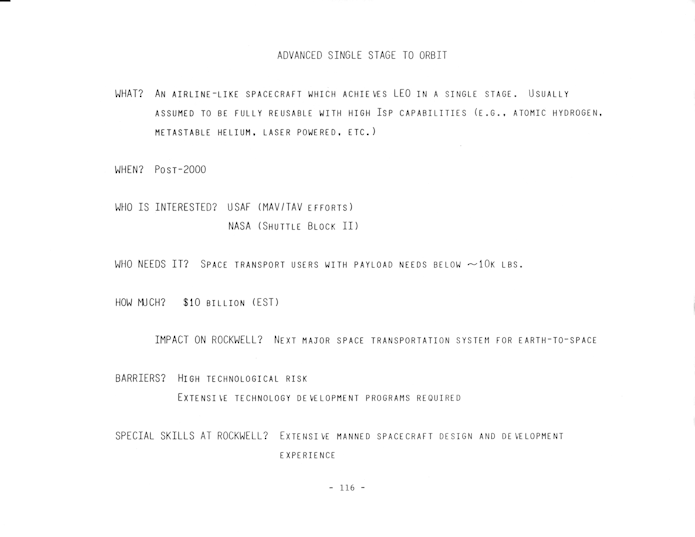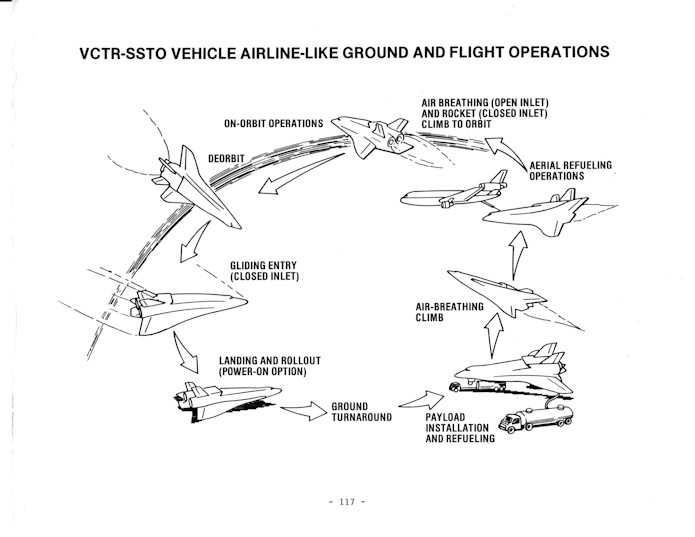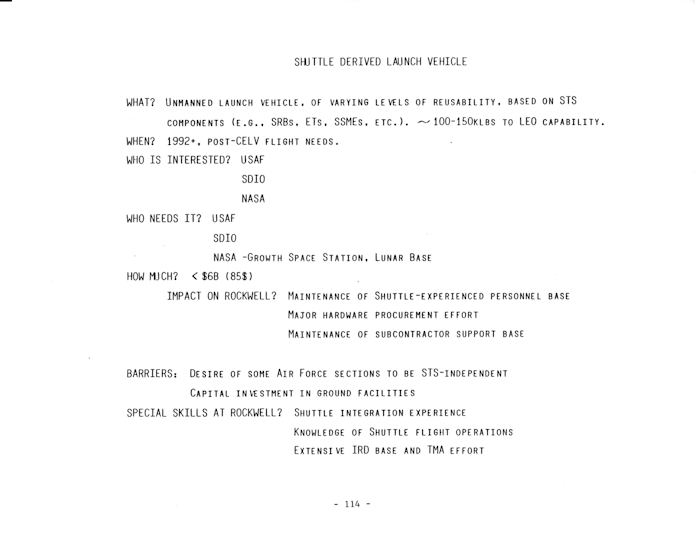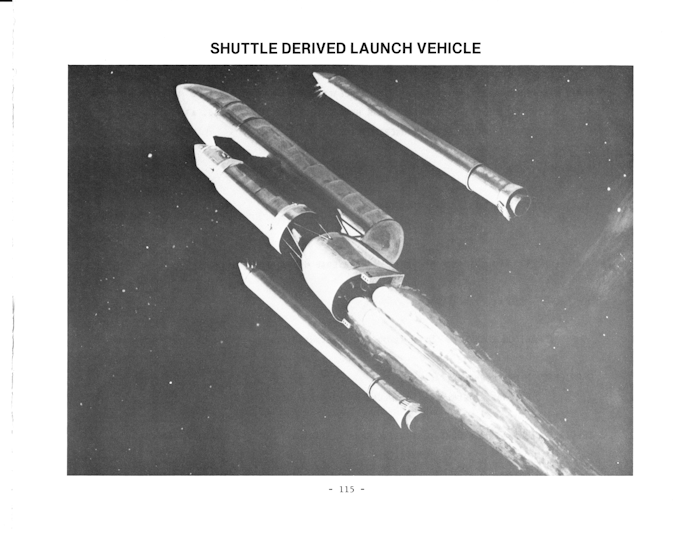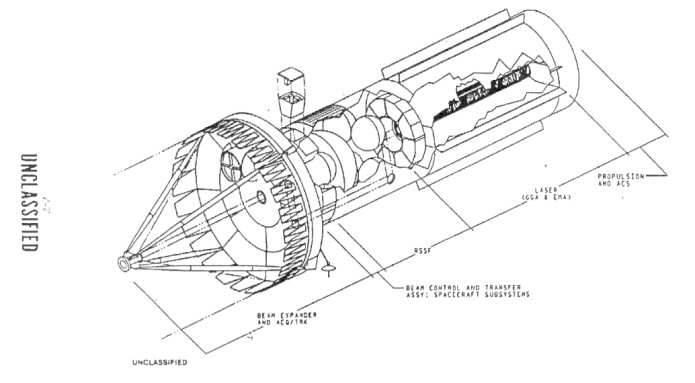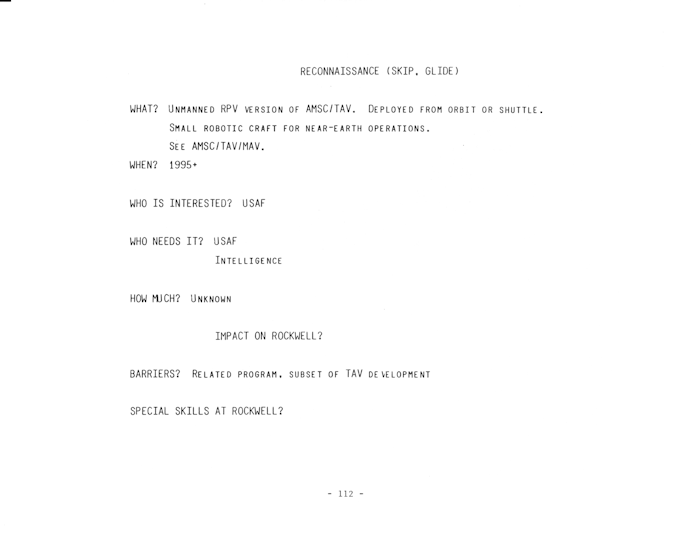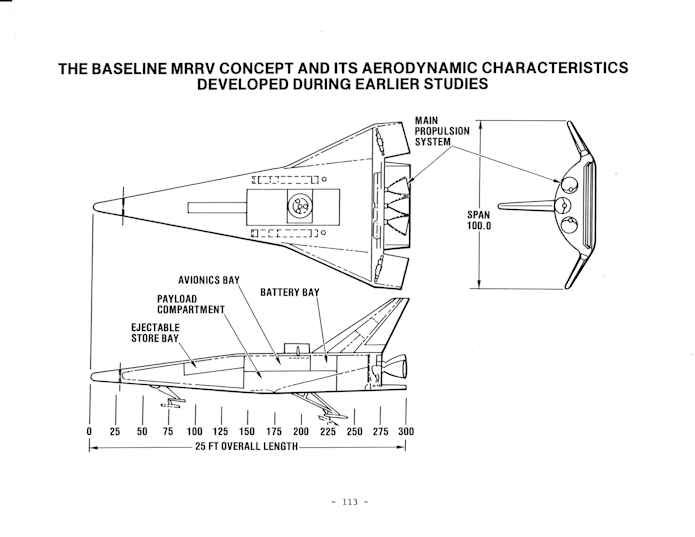In 1985, Rockwell International thought there might be a business case for commercialized space solar power systems. This could be akin to a miniaturized version of the Solar Power Satellite… while it looks like the normal approach would be a more or less conventional solar power systems simply attached to a customer payload, the possibility existed of remote systems that beamed energy to customers with microwaves.
In 1985, Rockwell ponders the business case for solar sails. Solar Sails, or “light sails,” had been around for a couple decades at that point, though purely as hypothetical constructs. Solar sails would really only be useful for interplanetary transits, which would of course limit the number of potential customers.
In 1985, Rockwell International considered the business case of an advanced single stage to orbit vehicle. The design illustrated was a manned, winged horizontal launched, horizontal landing design with, oddly, air inlets on the upper surface. Unlike the “Orient Express” or NASP designs of the time, this design was not meant to lift off and accelerate to Ludicrous Speed using scramjets, but was to lift off and rather sedately rendezvous with a tanker aircraft. This… is a bit familiar.
In the late 1990’s I worked for Pioneer Rocketplane. Our plan was to design and build a spaceplane that would lift off from a runway under turbojet power, with fuel tanks full of RP-1 and oxidizer tanks full of very little. The vehicle would rendezvous with a tanker aircraft which would transfer not jet fuel, but liquid oxygen. This is because for best performance an RP-1/LOX rocket system needs a far greater mass of LOX than RP-1. So leaving the LOX tank basically empty (a small amount was carried to keep the tank pressurized and chilled) would allow the vehicle to lift off at lowest practical mass. This lowered the mass needed for the landing gear, and lowered the surface area needed for the wings, which of course lowered the mass of the wings. The rocketplane would tank up, separate from the tanker and fire its rocket engine. In the case of the Pioneer Rocketplane “Pathfinder,” the spaceplane would reach orbital altitude, but not orbital velocity. An upper stage would boot the payload into orbit; the spaceplane would return home, either gliding or under jet power. The Rockwell design illustrated below *seems* to have been meant to operate in a similar fashion, but with the spaceplane intended to put itself directly into orbit. Most likely it would have been LH2/LOX powered, probably with SSME derivative engines.
The description in the text, though, describes very different vehicles, using propulsion system best described as highly steeped in the hypothetical. Atomic hydrogen and metastable helium are great stuff if you can get them… and, basically, you can’t. Not with 1980’s tech, not with 2020 tech. Someday, maybe.
A few things of interest:
Something in Deep Space Is Sending Signals to Earth in Steady 16-Day Cycles
“Deep space” as in 500 million light years away. “Signals” as in a cyclic fast radio burst, the first of its kind spotted. The source of the signal and the cause of its periodicity remain unclear.
Starliner faced “catastrophic” failure before software bug found
Back in December, the Boeing Starliner capsule that failed to meet up with the ISS had bigger issues than previously disclosed. Had the issue not been detected and corrected, upon separation from the service module there may have been thruster firings that could have led to loss of the capsule. Whoopsie.
Trump’s next budget could give NASA a huge funding windfall
$25 billion next year compared to $22 billion this year. This is to support a return to the moon by 2024. Whether Congress will support that after about half of ’em just tried to overturn the last election is anyone’s guess.
In 1985, Rockwell International contemplated the business case for Shuttle Derived Launch Vehicles. The specific design illustrated used the ET and SRB’s more or less stock, but the orbiter was replaced with a recoverable propulsion and avionics module. The payload came in the form of an upper stage with something very like the Apollo Command and Service Modules. This would probably have been for a lunar mission of some kind as a Shuttle-class booster is too big for a simple capsule mission to LEO. The basic design would have roughly performed like the presumably forthcoming SLS.
For those wondering why a “Space Force” might be necessary, behold:
A Russian “Inspector” Spacecraft Now Appears To Be Shadowing An American Spy Satellite
The “shadowing” is a little distant, varying from 150 to 300 kilometers. But the message is pretty clear. Since satellites can be observed from the ground (certainly with better resolution than from other satellites at 150 km range), the purpose of such a satellite is clearly intimidation. Either it can destroy the US satellite, or it is supposed to give the impression that it can do so. The US Space Force *should* eventually be able to do something about that, rather than just watch helplessly as the US is currently doing. The USSF will, hopefully, eventually be able to send inspectors of its own to rendezvous with the foreign inspectors and shadow *them,* preferably at a range of a few meters. The USSF will eventually have rapid responsive launch capabilities to not only send inspectors, interceptors and defensive craft, but also replacements and reinforcements.Refueling and orbital tugs. Orbital Banksies that can tag opponent satellites with something as simple and effective as spray paint… which will do wonders for optics, PV array and thermal balance.
Point the first: it’ll be a bit lax on the blogging for the next little while. Got stuff to handle. Not, not coronavirus… not yet, anyway.
Point the second: color me stunned, Boeing done failed another aerospace project.
In 1985 Rockwell thought that there might be a business case for a small unmanned spaceplane for recon purposes. At the time, the answer was apparently no… but within a few years Rockwell developed the “REFLY” spaceplane which, over a span of a couple decades, transmorgified into the X-37B which has flown a handful of top secret long duration missions.
After consultation with our Great Military Leaders, designers, and others, I am pleased to present the new logo for the United States Space Force, the Sixth Branch of our Magnificent Military! pic.twitter.com/TC8pT4yHFT
— Donald J. Trump (@realDonaldTrump) January 24, 2020
Looks not unlike a Starfleet logo, which isn’t a bad thing. It’s also not much more than a modest modification of the Space Command logo:

So anyone yapping about Trump ripping off Star Trek and there needing to be a copyright infringement lawsuit? Yeah, not so much.
